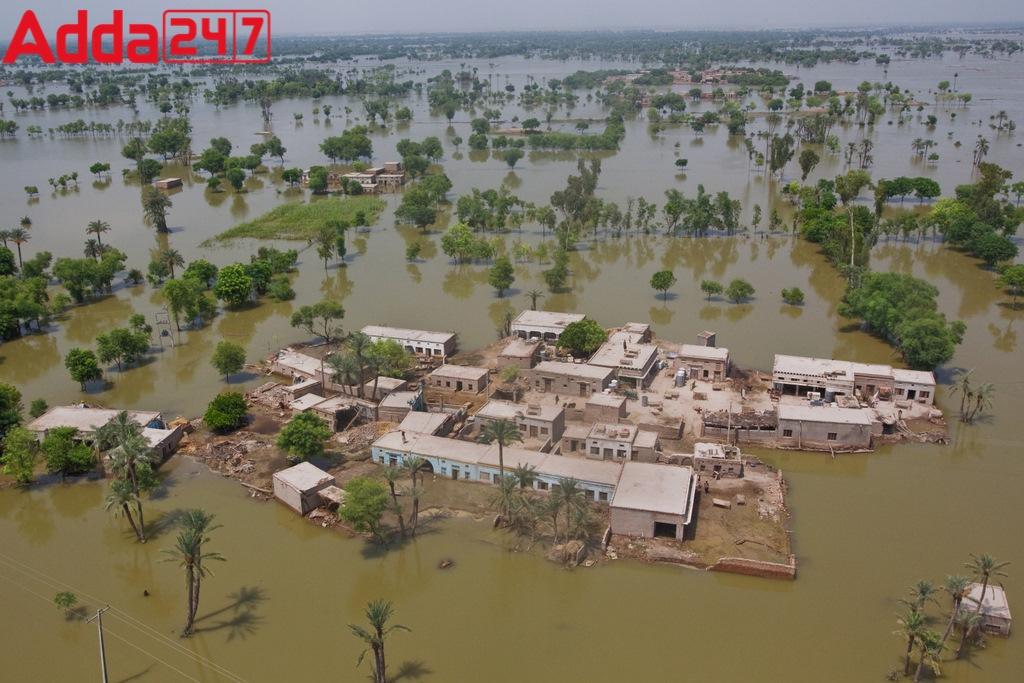At least 33 million people have been affected by deadly flooding in Pakistan, the country’s climate change minister said. Since mid-June, 937 people have died from severe rain and flooding across the South Asian country, according to the country’s National Disaster Management Authority (NDMA). Sherry Rehman, the minister for climate change, called the floods “unprecedented” and “the worst humanitarian disaster of this decade.” “Pakistan is going through its eighth cycle of monsoon while normally the country has only three to four cycles of rain,” Rehman said. “The percentages of super flood torrents are shocking.” She highlighted in particular the impact on the south of the country, adding that “maximum” relief efforts are underway.
Bank Maha Pack includes Live Batches, Test Series, Video Lectures & eBooks
The Most Affected Area:
The southern province of Sindh, which has been badly hit by the flooding, has asked for 1 million tents, while neighboring Balochistan province — largely cut off from electricity, gas and the internet — has requested 100,000 tents. The NDMA, Pakistani Army, and the Provincial Disaster Management Authority are working to assist those affected — but there is a “dire” need for shelter and relief due to the rising number of homeless and displaced families.
The Government Response:
Still Continuing Rain:
Floods And The Monsoon:
Every year, Pakistan struggles to cope with the monsoon season, which batters the country from June through August and which sets off widespread criticism over poor government planning. But the season this year has been particularly brutal, offering an urgent reminder that in an era of global warming, extreme weather events are increasingly the norm, not the exception, across the region — and that Pakistan’s major cities remain woefully ill equipped to handle them.
Climate Vulnerability:
Pakistan has long ranked among the most climate-vulnerable countries in the world, according to the Global Climate Risk Index, which tracks the devastating human and economic toll of extreme weather events. The country is estimated to have lost nearly 10,000 lives to climate-related disasters and suffered about $4 billion in losses between 1998 and 2018. Already, there are signs that the climate-related devastation will worsen in the coming years, experts say. The rains this year have been 87% heavier than the average downpour, according to Sherry Rehman, the country’s minister for climate change, who linked the new weather pattern to climate change. She warned that the country should prepare for more flooding and damage to infrastructure as its glaciers continue to melt at an accelerated pace, causing flash floods.



 Indian Olympic Medal Winners List Till N...
Indian Olympic Medal Winners List Till N...
 Who is the Inventor of the Gramophone?
Who is the Inventor of the Gramophone?
 HS Dhaliwal Appointed New DGP Of Andaman...
HS Dhaliwal Appointed New DGP Of Andaman...
